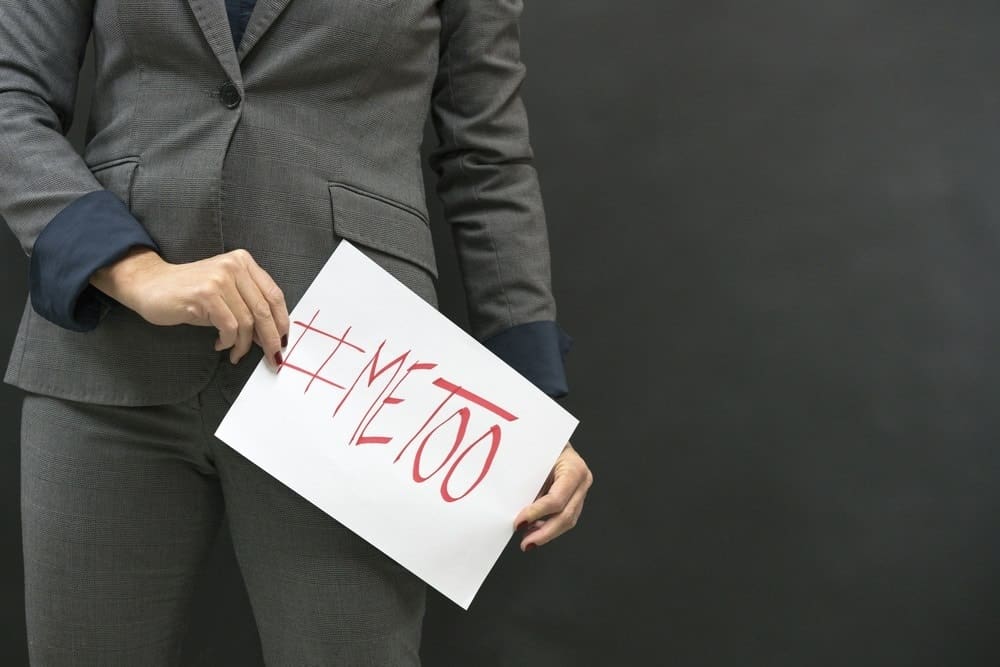Best Practices for Investigating Allegations
The #MeToo movement has brought to light allegations of misconduct by members of countless industries. As a result, in workplaces and on social media, we’re beginning to discuss in earnest what constitutes workplace harassment and what employers’ obligations are in combating it. Is your company holding these conversations, and do you know what to discuss?
with co-author Sadina Montani
Not all sexual harassment red flags come in the form of a neatly typed, formal complaint placed on the desk of a senior HR leader. In fact, few do. The days of de-prioritizing a compliance issue – such as a possible sexual harassment concern – because it wasn’t raised through a company’s HR department are gone.
Consider the Weinstein Company. When Harvey Weinstein’s accusers began lining up, its board of directors promptly claimed it had no prior knowledge of harassment by Harvey. Yet even if we believe that no formal complaints were ever lodged with the company’s HR department, it is hard to fathom that Weinstein’s egregious behavior was not well-known to the company. Indeed, Weinstein’s proclivity as a sexual predator was the worst kept “secret” in Hollywood – it was even the topic of comedy banter at the Oscars and the subject of parody on the hit TV show 30 Rock. The New York Attorney General recently opened an inquiry to determine what the Weinstein Company knew about Harvey’s actions and when. And a group of plaintiffs have sued the Weinstein Company, Miramax (which Harvey Weinstein founded), as well as Harvey Weinstein personally in a federal racketeering class action, alleging that together they conspired to “facilitate and conceal [Weinstein’s] pattern of unwanted sexual conduct.” Employer liability for sexual harassment will arise if an employer knew or should have known about the harassment. The Weinstein Company has much to fear.
The #MeToo movement has brought to light allegations of misconduct by members of countless industries ranging from entertainment and media to hotel cleaning crews. As a result, important and long-overdue conversations about what constitutes workplace harassment and employers’ obligations to prevent, identify and eradicate it are taking place on Twitter and Facebook, as well as in boardrooms across the country.
Because liability will attach if an employer should have known about the harassment (even if no one formally reported it), a prompt and thorough investigation should occur whenever concerns of possible harassment surface. This is true even if the allegations come to light through a #MeToo tweet, a blog or Facebook post, an exit interview with a departing employee, an anonymous letter sent to HR or the board or a rumor in the office about what happened at last night’s company-sponsored happy hour. While the obligation to investigate is not new, how it plays out in the modern workplace is suddenly front and center as a result of the #MeToo movement.
Whether a legal obligation to investigate workplace misconduct arises is a question that can only be answered on a fact-specific, case-by-case basis. However, the goal of an investigation should not be to simply “check the box;” it should be to ferret out and eliminate harassment as quickly as possible, ideally before that behavior escalates and impacts multiple employees.
To be sure, investigating anonymous complaints or vague rumors of harassment can be challenging, but that does not mean it is not worth the effort. It is far better for an employer to take immediate action in an effort to get to the bottom of harassment concerns and come up empty-handed due to the imprecise nature of the allegations than to ignore rumors or online gossip. When those rumors turn into a public scandal, no employer likes having to explain why it failed to take the matter seriously.
The investigative tactics employed with anonymous complaints will likely require a customized approach. While a detailed anonymous complaint might lend itself to more traditional investigatory methods, vague anonymous complaints or online rumors devoid of facts will warrant a lighter touch. For example, if an employee has shared a #MeToo tweet suggesting that she has experienced workplace harassment at some point during her career, a human resources team member might consider reaching out to the employee as follows:
Company X supports and applauds your willingness to share troubling experiences you have had in the past. Workplace harassment is something we don’t tolerate here, but in order to address it, we need employees like you to come forward and bring it to our attention. To the extent you have had similar experiences here, we truly hope you will share that information with us so we can look into it and put a stop to it.
Each investigation requires its own fact-specific strategy, but there are a few investigative best practices to keep in mind. Importantly, investigations should be launched as quickly as possible with the ultimate goal of being “prompt but thorough.” Further, investigations typically should be coordinated through the HR department. The investigator assigned may be an internal HR or compliance professional or an outside resource (such as a lawyer or HR consultant). Either way, an experienced investigator should be tasked with defining the strategy and timeline for the investigation in coordination with the designated HR representative.
When concerns of possible harassment come to light and the alleged victim or victims are known, the investigation typically should begin with an interview of the victim. This allows the investigator to understand the scope of the alleged harassment and define the parameters of the investigation, as well as to quickly identify other potential witnesses, relevant documents and/or electronic communications for review. Usually (but not always), the investigation ends with an interview of the alleged harasser. A good investigator will ask each person interviewed who else may have information critical to the investigation and leave open the possibility that certain witnesses may need to be interviewed more than once as the investigation progresses.
Notably, even if a complainant asks the employer not to investigate (perhaps out of a fear of retaliation), the employer still must investigate. Remember: liability for sexual harassment will attach to the employer if it knew or should have known about the harassment. Thus, if anyone in a management position learns of alleged harassment, such knowledge is imputed to the employer and an obligation to take swift remedial action arises.
Similarly, if the complainant demands strict confidentiality with regard to the handling of the complaint, he or she should be informed that in order to ensure a thorough investigation, strict confidentiality cannot be guaranteed. Finally, the complainant, as well as every witness interviewed, should be reminded that they are protected from retaliation for having participated in the investigation. Each participant should be informed of steps they should take if they feel they are subject to retaliation, and HR should check in with the complainant periodically after the investigation is concluded to ensure that retaliation is not occurring.
The #MeToo movement has shined a bright light on the sad reality that sexual harassment still is a very real problem in countless workplaces across the United States. Creating an environment where every employee feels both encouraged and safe to bring these issues to management’s attention is the critical first step in fixing this problem.











